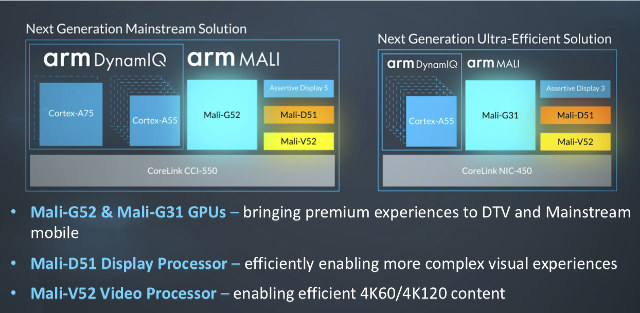Arm has just announced four multimedia Mali IP blocks to be found in SoC for mainstream devices:
- Mali-G52 GPU with 30% faster performance over Mali-G51, and 3.6x better machine learning performance
- Mali-G31 GPU that’s 20% smaller, and 20% more efficient than Mali-G51, supports OpenGL ES 3.2 and Vulkan APIs
- Mali-D51 display processor 30% power saving, 50% lower latency compared to Mali-DP650
- Mali-V52 video processor supporting 4K60/4K120 content
Mali-G52 GPU
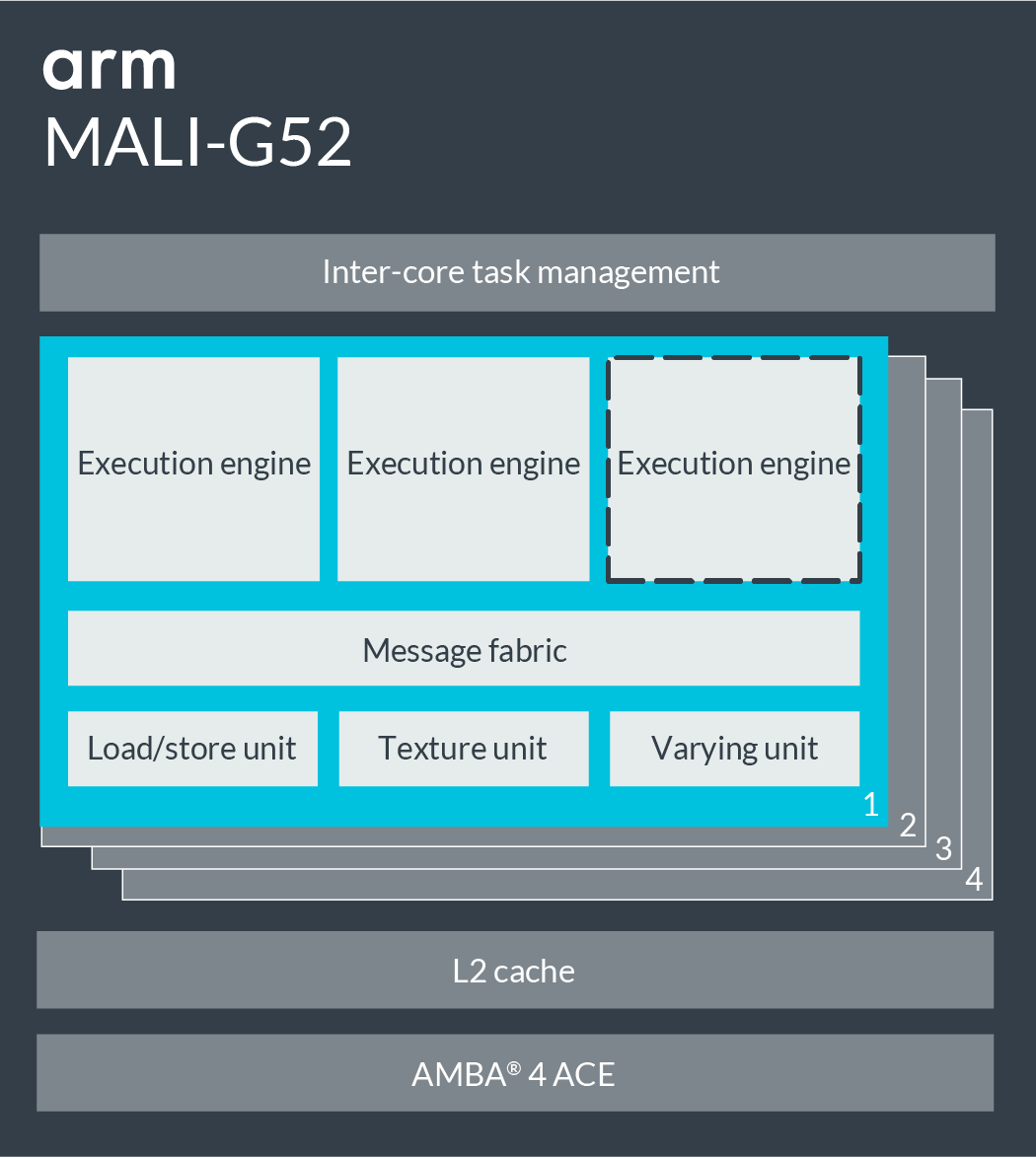
Mali-G31 GPU
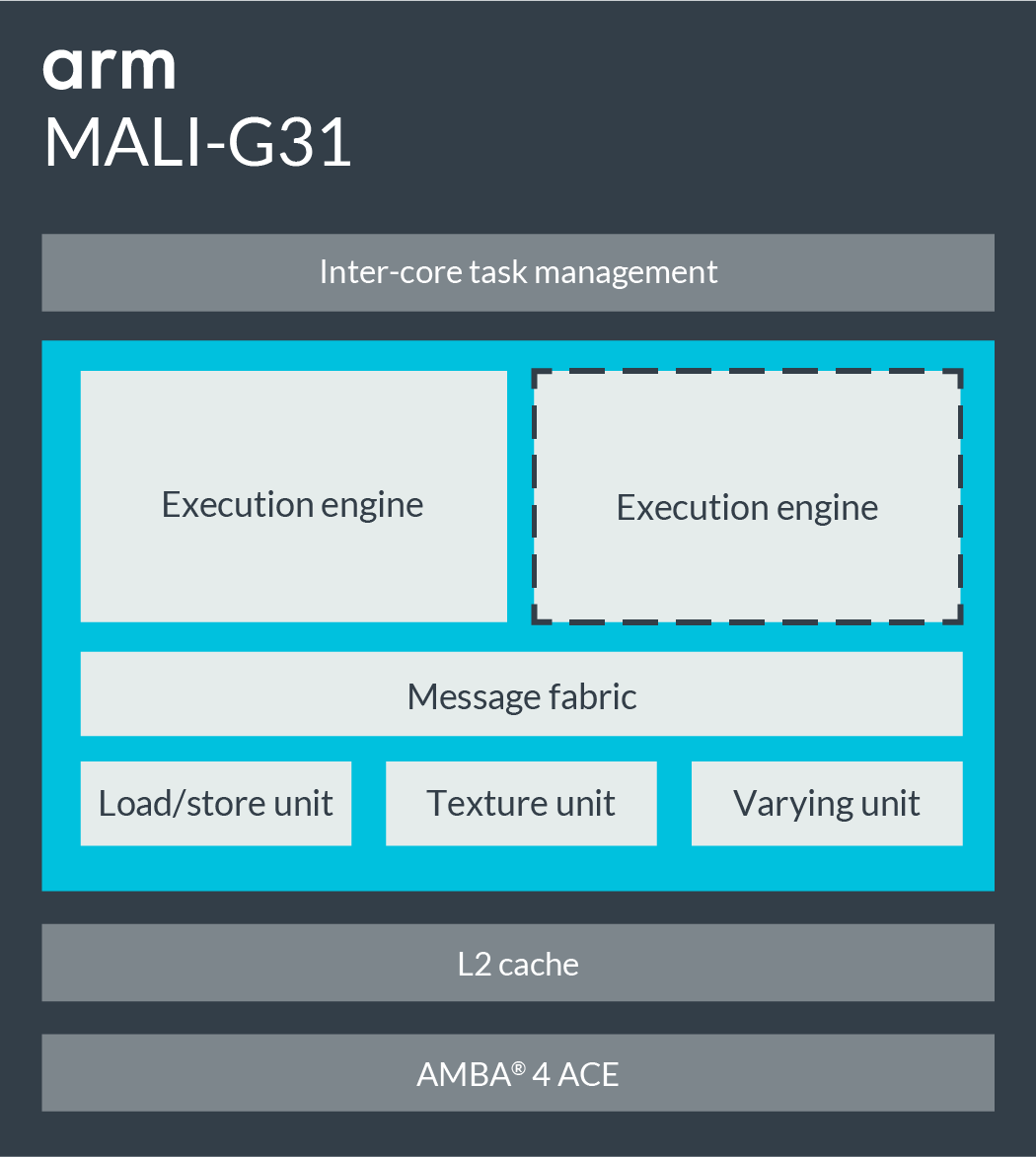
No specific Machine Learning acceleration in Mali-G31, but with an area 20% smaller than the Mali-G51, 20% better performance density for complex workloads and 12% improvement for the growing complexity of UI, the GPU should find it way into entry-level SoC manufactured using 28nm process. It’s also the smallest Arm GPU supporting the latest OpenGL ES 3.2 and Vulkan API. The GPU will be found in Arm Cortex A55 processor, and be clocked at up to 650 MHz delivering 1.3 Gpix/s.
Mali-D51 DPU
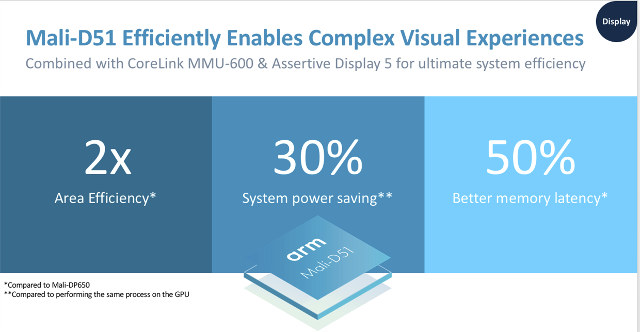
Mali-D51 display processor is based on the same Komeda display architecture as the higher-end Mali-D71 DPU, but with an area 30% smaller since it does not directly supports 4K, but can downscale it to screens up to 2048×4096 pixels at 60fps.
Mali-D51 achieves twice the scene complexity in the same area as a dual display implementation of the previous generation Mali-DP650, and while driving a single display adds a second set of four composition layers to the scene. Memory latency has also been lowered by 50%.
Mali-V52 VPU
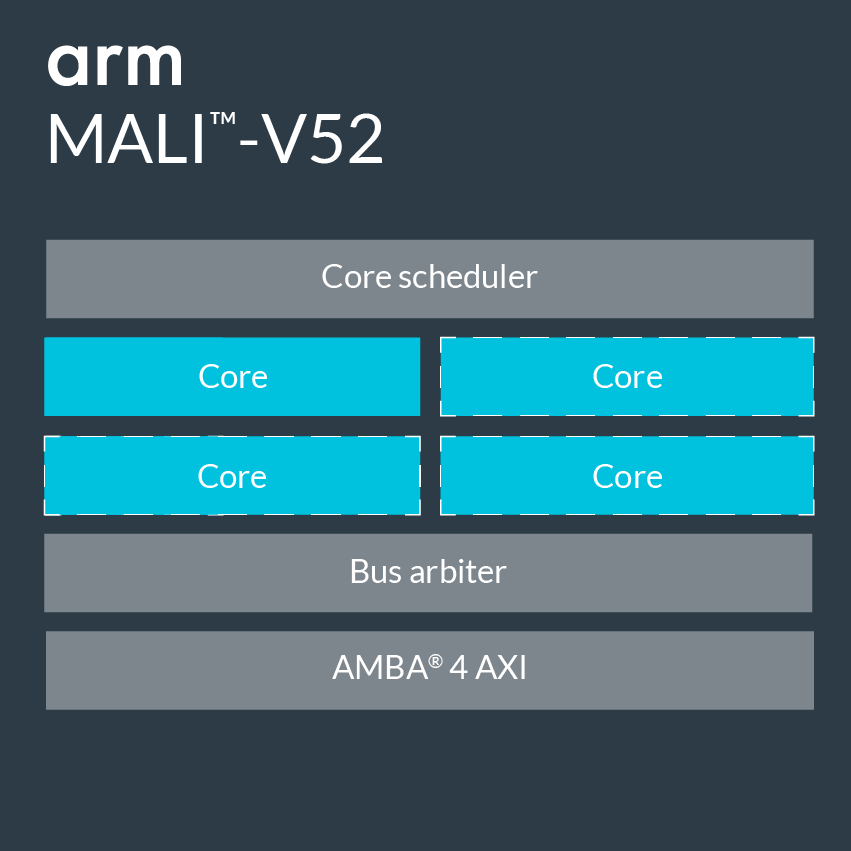
Mali-V52 is an update to Mali-V61 and provides 20% better upload quality, 38% smaller silicon area, and double the decode performance. The platform is scalable from 1 to 4, and the four core version supports 4K120 decoding, and 4K60 encoding. Beside the already supported 10-bit H.265 and VP9 encoding/decoding, the VPU adds High 10 H.264 encode and decode capability to Levels 5.0 and 5.1 respectively, as well as AVS Part 2 (Jizhun) and Part 15 (AVS+, Guangdian) decode capability for YUV420.
More details can be found on the blog posts for the GPUs and DPU/VPU.

Jean-Luc started CNX Software in 2010 as a part-time endeavor, before quitting his job as a software engineering manager, and starting to write daily news, and reviews full time later in 2011.
Support CNX Software! Donate via cryptocurrencies, become a Patron on Patreon, or purchase goods on Amazon or Aliexpress


